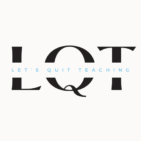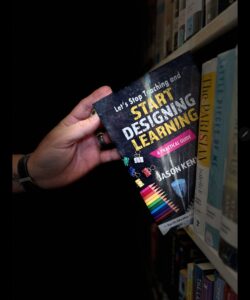When we hear “assessment,” many of us instantly think of standardized tests, scantron sheets or Google Forms, and the collective groans of learners (and teachers). But assessment isn’t meant to be synonymous with “test.” It originates from the Latin word assidere, meaning “to sit beside.” Imagine that—a teacher sitting beside a learner, guiding them, offering insights, and helping them navigate their learning journey. Testing, in its rigid and often isolating form, rarely allows for such closeness or collaboration. Instead, it’s formative and summative assessments, paired with intentional feedback, that truly embody the spirit of sitting beside and guiding learners.
Let’s explore how we can reshape our perspective on assessment by embracing formative and summative practices, integrating feedback, and designing meaningful learning experiences.
Formative First: The GPS of Learning
Imagine driving to an unfamiliar destination without GPS. You’d likely miss a turn or two, wasting time and energy retracing your steps. Formative assessment is the GPS of education. It offers real-time guidance, allowing both the learner and the teacher to adjust course as needed.
In practice, formative assessments can be as simple as asking learners to explain a concept to a partner, using digital tools for real-time polls, or encouraging them to create mind maps during a lesson. These moments aren’t about “catching them off guard” but about gaining a window into their thinking. Feedback here is crucial—it’s like the GPS voice saying, “Recalculating. Let’s adjust the route.”
Through scaffolding, formative assessments guide learners from one skill level to the next. For instance, a teacher might start with a guided discussion about persuasive techniques, move to group analysis of a commercial, and finally have learners draft their own arguments. Each step is an opportunity to assess understanding and provide feedback before the final product.
Summative Assessment: The Destination, Not the Detour
While formative assessments guide, summative assessments measure whether the destination has been reached. But here’s the kicker: summative doesn’t have to mean “test.” In its purest form, a summative assessment is any demonstration of learning at the conclusion of a unit, project, or experience.
Picture a class learning about ecosystems. Instead of a multiple-choice test, learners design their own ecosystem models, explaining the relationships within it. Summative assessments like this allow learners to showcase learning in ways that matter to them. Pair this with clear success criteria—like a rubric detailing “what success looks like”—and you’ll get better outcomes than tests can offer.
Feedback still plays a role here, even after the summative moment. Highlighting strengths and identifying growth areas transforms summative assessments from a final judgment into a springboard for future learning.
Feedback: The Real Secret Sauce
Let’s be real: a test score alone doesn’t teach. Feedback does. Hattie’s research places feedback at an effect size of 0.70, which translates to nearly two years of growth in a single year. Yet feedback must be timely, specific, and actionable to be effective.
Think of feedback as the notes a coach gives during a game. A learner struggling with paragraph transitions doesn’t benefit from vague praise like, “Good effort.” Instead, they need guidance like, “Your thesis is strong, but your topic sentences could better connect to it. Let’s try rewriting one together.”
The key is to use scaffolding alongside feedback. Teachers can model, co-write, or break down tasks into manageable steps. For instance, a learner struggling with math equations might benefit from a color-coded breakdown of the process or a peer demonstration. This scaffolding not only builds confidence but reinforces the idea that improvement is a journey, not a destination.
Assessment isn’t about grades; it’s about growth. When we embrace the spirit of assidere, we move closer to our learners—figuratively and literally. By designing formative moments, reimagining summative assessments, and prioritizing actionable feedback, we step away from the rigidity of testing and into the artistry of teaching.
So, let’s ditch the scantrons and forms to embrace the seat beside. Our learners don’t just need our lessons—they need our guidance. When we sit beside them, we become not just teachers, but partners in their educational journey. That’s the kind of learning they’ll carry with them, long after they leave our classrooms.


